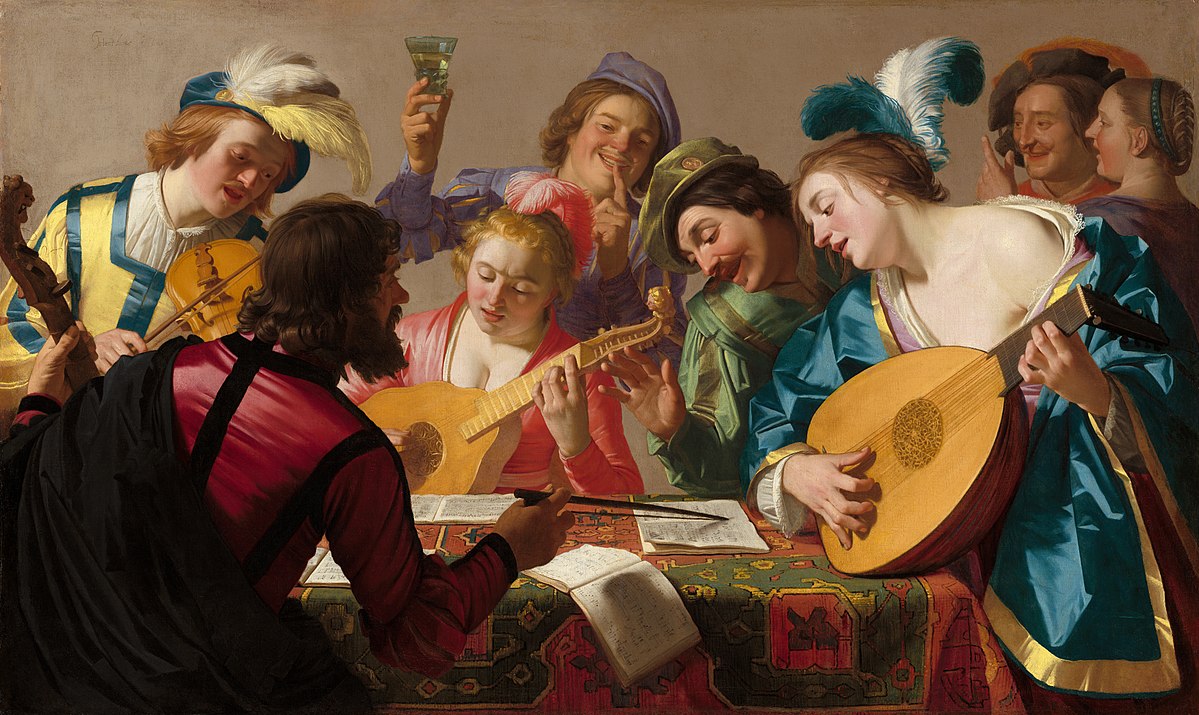In the medieval curriculum music was grouped with the sciences because mathematics underlies musical theory and notation. The mainstay of medieval sacred music was the Gregorian chant or plainsong, which relied on a single voice. At the close of the Middle Ages musicians in the Low Countries and northern France developed the technique of polyphony, which combined several voices in complicated harmony.
When French and Flemish musicians journeyed to Italy in the fifteenth century, they introduced polyphonic music and borrowed in return the popular tunes of the dances and folk songs they encountered in southern Europe. The end products of the interaction were the sacred and secular polyphonic compositions of Josquin des Pres (c. 1450-1521) at the court of Louis XII, and the masses of Giovanni Palestrina (c. 1526-1594), choirmaster in the Vatican.
The secularism and individualism of the Renaissance and its taste for experimentation also affected music. New instruments were developed or imported: the violin, double bass, and harpsichord; the organ, the kettledrum, and the lute. Paid professional singers staffed the choirs of Antwerp cathedral and of the Vatican; a retinue of musicians became a fixture of court life. German artisans, calling themselves master singers, organized choral groups. Music had also become part of popular culture; the French cabaret, the Spanish yenta, the German Wirtshaus, the Polish gospoda, the English pub, all rang to popular folk songs.

